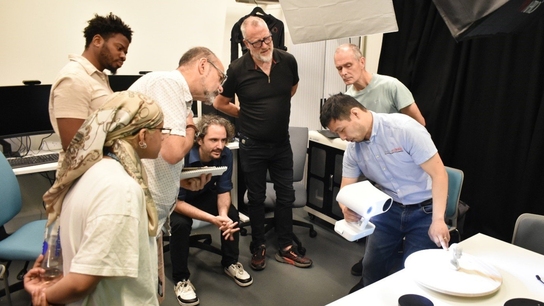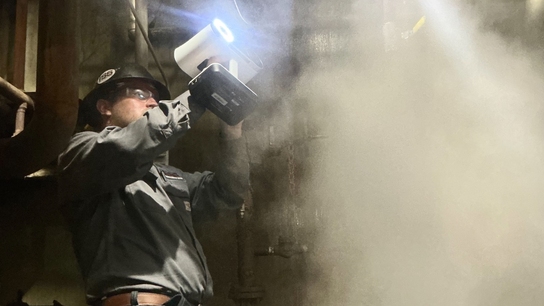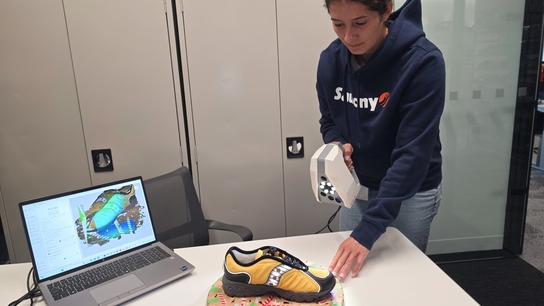Breathing new life into classic cars: scanning in perfect 3D down to the tiniest parts
The Goal: To use Artec Eva and Space Spider to scan a classic 1937 Ford Eifel and create a perfect 3D model for prints, sheet metal dies, and spare parts.
Tools Used: Artec Eva, Space Spider, Artec Studio
Classic-Car.TV digitizes a unique 1937 Ford Eifel with Artec 3D scanners at the MakerSpace innovation center of the Technical University of Munich.
How can you capture the current state of a very rare classic car and take accurate measurements of it in order to preserve it for posterity and ensure spare parts can be made in the event of an accident or damage? The team at Classic-Car.TV is no newcomer to tasks like these. Passionate about everything related to old-timers, they publish articles, photos and videos on the Classic-Car.TV website to give their audience the big picture of the classic car world. Classic-Car.TV produces new stories every week, reaching around 300,000 international readers a month.
Objectives and advantages of using 3D scanning for classic cars
The Classic-Car.TV team is now working on developing a database of classic car 3D models, one of which is a 1937 Ford Eifel. The vehicle has a special Gläser chassis and is therefore considered an absolutely unique piece.

Ford Eifel, prepared for scanning. Targets were used on large featureless surfaces to ensure better tracking.
Until recently, old-timers were captured manually using stencil frames: a frame was placed around the vehicle and graphically scanned slice by slice. Wooden skeletons were created from the resulting cross-sections to reproduce the vehicle’s shape. Although this method is quite popular, it is expensive, time-consuming and not always accurate enough.
Using 3D scanners for this task is proven to save time and money, delivering more accurate results compared to the traditional method. Scans of individual parts can be used for reverse engineering, where parts are examined and often modified in order to produce spares. This is especially important for unique cars like the Ford, in case they are damaged. This car is missing its retractable top, which can now be recreated. In addition, the owner of the car wanted to document its condition as accurately as possible, which included taking 3D measurements. The data can also be used for 3D printing – a 1:4 model of this Ford has already been created.
Artec 3D: Cooperation with MakerSpace makes exciting projects happen
The digitization of the Ford Eifel was facilitated by the MakerSpace high-tech workshop, based at UnternehmerTUM, which is the innovation center of the Technical University of Munich. Housed on 1,500 sq m, MakerSpace features various manufacturing areas for processing metal, wood, textile and other materials using modern equipment. The Classic-Car.TV team came to the workshop in order to 3D digitize the Ford with Eva and Space Spider scanners, provided to MakerSpace by Artec 3D and supported by Artec Gold reseller KLIB.
“Our expertise lies in the presentation of restoration methods for classic cars,” said Kay MacKenneth, editor-in-chief of Classic-Car.TV. “Modern technology is becoming more prevalent here.”

Scanning the lead frames
3D scanners deliver high-quality data down to the smallest detail
The team used the Eva and Space Spider handheld 3D scanners to collect as much data on the 80-year-old Ford as possible. The more information about the body of the car, the easier it is to put scans together for a complete 3D model. On the other hand, not too many scans should be made: each scanning session generates a bulk of data, which requires the use of powerful computers.
It proved helpful that the body of the Ford was covered with matte anti-corrosion primer and has no glossy finish – this spared the team of the need to use anti-glare spray, making scanning easier. The Ford’s body, interior, wooden frame and the ladder frame on which the body rests were scanned with Artec Eva. This allowed for acquiring accurate digital measurements and locating missing stiffeners in order to make them separately later. But that alone was not enough: the old-timer was disassembled so the team could scan its hard-to-reach parts. That’s where Space Spider, an ideal tool for detailed digitization, came into play: It captured individual parts in extremely high resolution.

Scanning the interior of the Ford
“Working with Artec 3D scanners was a completely new experience for me and it opened up a whole new world of possibilities,” said Kay MacKenneth. “In the past, you had to measure a classic car with templates and build appropriate models. This would take months and there was the risk of ending up with deviations. In my opinion, a 3D scanner should nowadays be part of any advanced classic car garage.”
Processing scans in Artec Studio
Individual scans were aligned and fused in Artec Studio 3D modeling software. During data processing, scans were checked for possible holes. The scanning of the Ford went smoothly, and retouching had to be applied only to a few corners and cavities that were too angular to capture. At the end of the process, a point cloud, a polygon model and a texture dataset were created.
The comprehensive 3D data makes it easy to proceed with the restoration of the car. The 1:1 model can now be used to create 3D prints, sheet metal dies and spare parts. Thanks to the Artec 3D scanners, the one-off vintage car has been preserved for posterity, car fans and its owner.
“The scope of work is huge, and the scan results will certainly save months of work,” said Kay, who at the end of August 2017 presented the original model under the motto “Future Meets Past” at the Concorso Competizione Sportivo exhibition in Munich.

3D-model of the Ford
Classic-Car.TV: Further 3D scanning projects
“Together with MakerSpace and Artec 3D, we are working on several cases in which we can show how high-tech methods can be integrated into traditional professional restoration,” said Kay. “This begins with the reconstruction of parts and extends to mold-making and capturing entire vehicle shapes in order to be able to recreate the vehicle in case of damage. This is very important, especially for rare vehicles.”
Speaking about his next projects, Kay mentioned scanning Fiat 600 Elaborazione Frua, a unique piece constructed by Italian designer Pietro Frua. The car is missing turn signal mountings on the fenders. They had very special design and are now to be reconstructed by means of 3D scanning and reverse engineering. “We will also use the scanners for other stencil forms in chassis production in order to create illustrative material,” said Kay.
Scanners behind the story
Try out the world's leading handheld 3D scanners.





